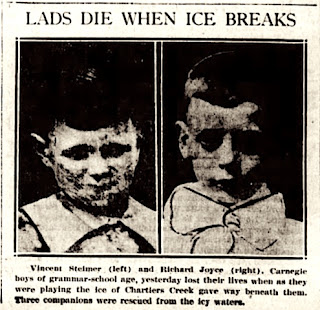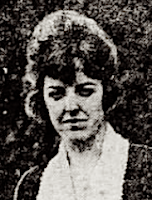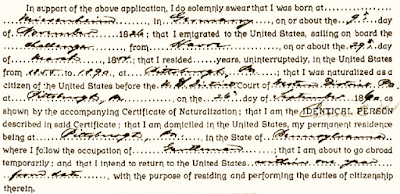Isabella Jeffry was born in Ohio in 1839 and was living in Kansas when she married Hugh Kirkendall, my husband's 3rd great-uncle, in 1862. They moved to Montana Territory by 1870 and were described by newspapers decades later as pioneer residents of Lewis & Clark County.
Although Isabella and women throughout the country couldn't vote, she was certainly active in the community. The
Montana Historical Society says that Isabella "was one of Helena's little known unsung heroes. No woman was more active in the community, nor more sensitive to the needs of the less fortunate." Here are some of her accomplishments that I've found:
1881 - Founding Member, Ladies' Aid Society of the First Baptist Church of Montana at Helena
1883 - Charter Member, Helena chapter of the Women's Christian Temperance Union
1884 - Finance Committee, First Baptist Church of Helena
1891 - President, Montana Women's Relief Corps
1892 - named by the Mayor as Chairman of raising funds for Mississippi flood victims (her leadership helped raise money for starving Russians earlier in the year)
1893 - Leader, Women's Helena for the Capital Club
1894 - Supervisory Board, Associated Charities of Helena
1900 - President, Florence Crittenton Home, a refuge for women and girls in need
Isabella's role in the Women's Helena for the Capital Club was especially noteworthy as it showed the importance of women with respect to political issues. "Denied the vote, but far from devoid of influence, Montana's women readily took sides in the capital fight of 1894."
The
Archives West website explains this historic vote: "The question of a permanent location for the capital of Montana was submitted to the voters in the general election of 1892. Seven cities entered the contest: Helena, the temporary capital; Anaconda; Butte; Bozeman; Great Falls; Deer Lodge; and Boulder. The two cities receiving the most votes, Helena and Anaconda...entered a run-off campaign two years later. The capital question overshadowed all other political issues in the 1894 election."
"The Women's Helena for the Capital Club, led by Isabella [Mrs. Hugh] Kirkendall of Helena, was a state-wide group that solicited help from women in every county.
Although unable to vote, the women in the local chapters exerted pressure on the men with voting privileges through letter writing campaigns, distribution of leaflets, newspaper advertisements, and speeches. Helena won the election by a narrow margin: 27,024 votes to 25,118 for Anaconda."
Although unable to vote in the 1894 election, Montana women won the right to vote in 1914, five years before Isabella died. I'm so glad she lived to see it happen.






































